Making a homemade sunscreen can provide an alternative for those seeking a more natural approach to skin protection. The process involves selecting ingredients that have properties known to protect the skin from harmful UV rays, such as zinc oxide.
By combining these ingredients, individuals can create a sunscreen tailored to their specific needs, preferences, and skin types. This customization is one of the key advantages of do-it-yourself (DIY) sunscreen solutions.
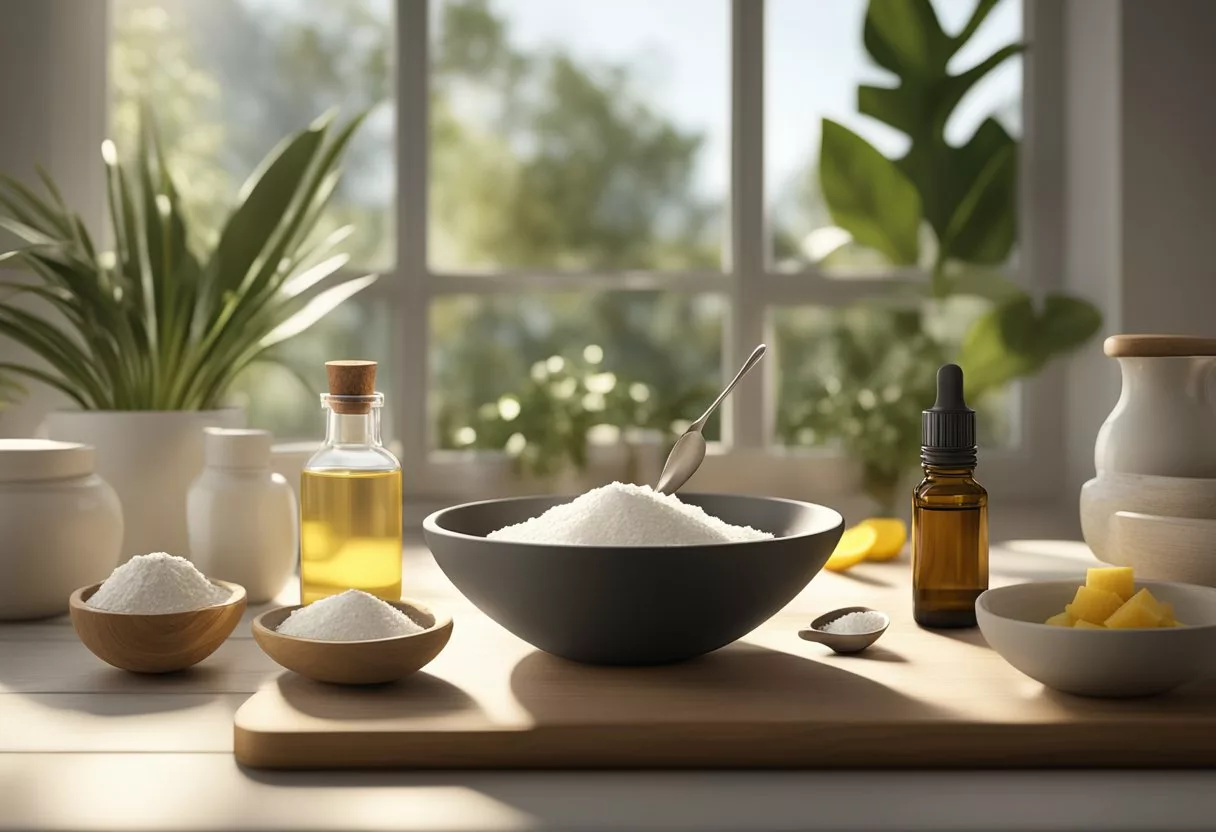
One of the appeals of DIY sunscreen is the control it offers over what goes on the skin, a significant consideration for those with sensitivities or a preference for organic components. However, it is critical to understand that homemade sunscreen comes with potential risks and may not provide the same level of protection as commercially available options.
Commercially available sunscreens are rigorously tested to ensure safety and efficacy. Therefore, careful research, precise preparation, and realistic expectations are essential when creating and using natural sunscreen.
Key Takeaways
- Making sunscreen at home allows for customization using natural ingredients.
- It is essential to understand both the benefits and limitations of DIY sunscreen.
- Proper preparation and testing are crucial to ensure effectiveness and skin safety.
Understanding Sun Protection
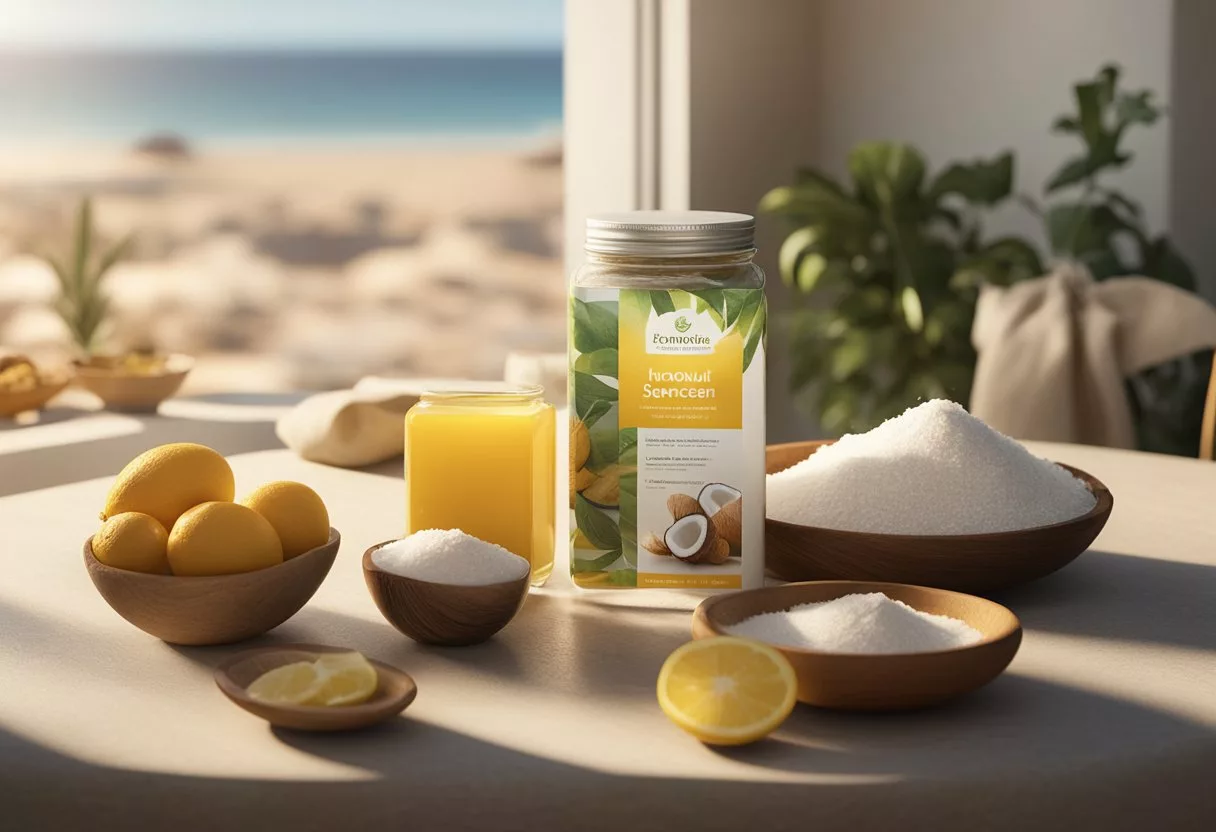
Sun protection is crucial not only to prevent sunburn but also to reduce long-term cancer risks. This section will discuss the different types of solar radiation, the meaning of SPF, and the regulations around sunscreen.
It also examines the potential benefits of using homemade sunscreen, ingredients to be cautious of, and natural alternatives that can be used effectively for sun protection.
UVA and UVB Rays
UVA rays penetrate deep into the skin and are the primary cause of long-term skin damage, photoaging, and are associated with certain types of skin cancers. Meanwhile, UVB rays primarily affect the surface of the skin and are the main culprit behind sunburns.
Effective sunscreens need to protect against both types of rays to reduce the risk of skin damage.
SPF Basics
SPF, or Sun Protection Factor, measures the protection a sunscreen provides against UVB rays, which are the main cause of sunburn.
A sunscreen with an SPF of 20, for example, means one could theoretically stay in the sun 20 times longer without getting sunburned. However, high SPF ratings do not necessarily correlate with total protection from UVA rays.
Regulations and Safety
The FDA regulates sunscreens as over-the-counter drugs and mandates testing and labeling to ensure safety and efficacy.
The Environmental Working Group (EWG) also provides guidelines and safety information on sunscreen ingredients. Following these regulations and guidelines is vital when formulating or choosing sunscreens.
Benefits of Homemade Sunscreen
Homemade sunscreens may offer customizable protection with fewer additives. These formulations often include natural ingredients and omit chemicals like oxybenzone and parabens that some individuals wish to avoid due to sensitivities or concerns over potential health effects.
Ingredients to Avoid
Certain ingredients in conventional sunscreens are considered toxic by some organizations. These include:
- Oxybenzone: Can cause skin allergies and has potential hormone-like properties.
- Retinyl Palmitate: May speed the development of skin tumors when used on skin in the presence of sunlight.
- Octinoxate: Believed to disrupt hormone levels.
- Avoiding fragrances and parabens can also reduce the risk of skin irritation or other adverse reactions.
Natural Alternatives
Natural sunscreen ingredients include zinc oxide and titanium dioxide.
When used as non-nano particles, they are less likely to be absorbed into the skin and more environmentally friendly.
Confirming these ingredients provide board spectrum (UVA and UVB) protection is important for their effectiveness in preventing sunburn and minimizing cancer risk.
Choosing Ingredients
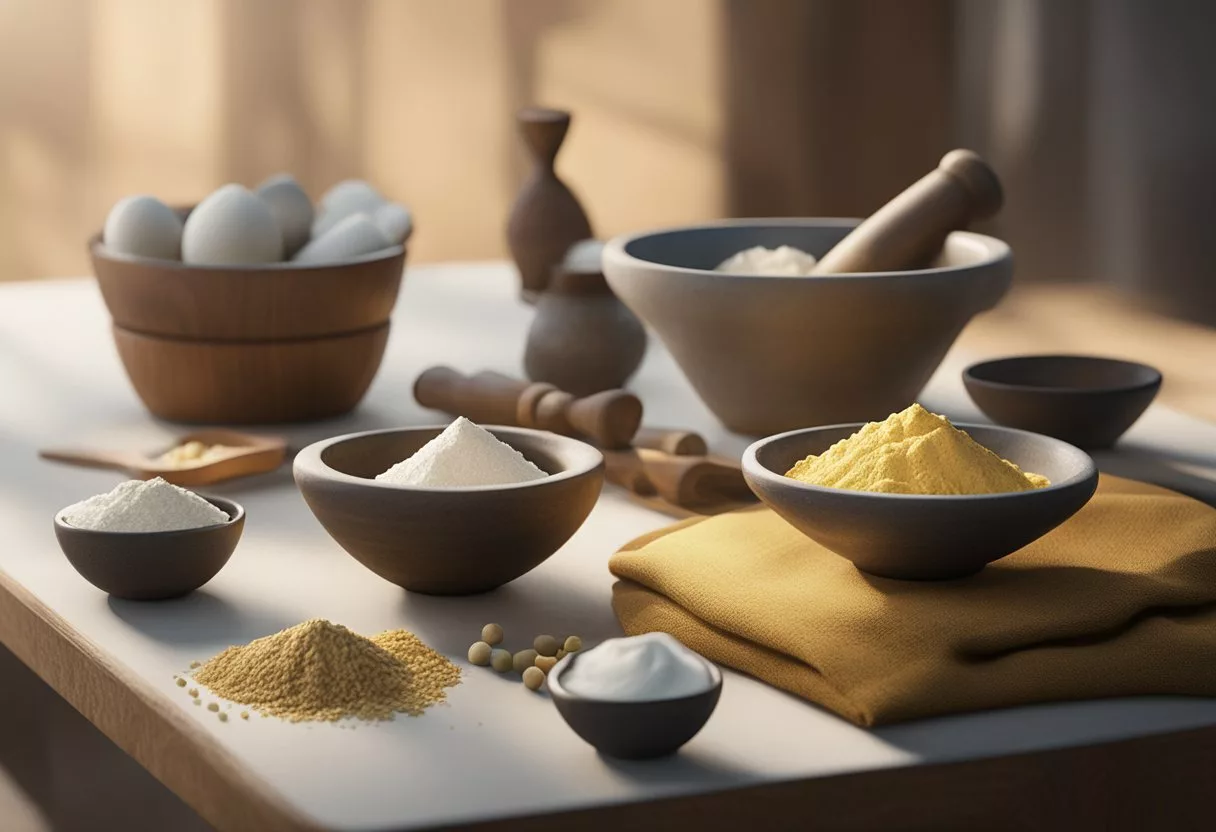
When preparing natural homemade sunscreen, it’s essential to carefully select skin-nourishing ingredients that offer protection and moisturization. The right combination of oils, butters, and boosters can make an effective and safe sunscreen.
Carrier Oils
Carrier oils serve as the base for homemade sunscreen, transporting essential oils and providing hydration. Consider these popular options:
- Coconut Oil: Naturally contains Vitamin E and antioxidants.
- Almond Oil: A good source of Vitamin A, protective against UV radiation.
- Jojoba Oil: Resembles skin’s sebum, offering moisturizing benefits.
- Avocado Oil: High in Vitamins A, D, and E and UV-filtering properties.
- Olive Oil: Packed with antioxidants, it can enhance skin health.
- Fractionated Coconut Oil: A lightweight option that won’t solidify at cooler temperatures.
- Sweet Almond Oil: Helps to prevent sun damage and is gentle on the skin.
Natural Butters
These butters are integral for providing a creamy consistency and extra moisture:
- Shea Butter: Exceptional for skin care; offers some natural UV protection.
- Beeswax: Helps to stabilize sunscreen, making it water-resistant. Choose either traditional beeswax or beeswax pellets for easier melting.
Essential Oils
Essential oils add fragrance and can also have skin benefits:
- Lavender: Known for its soothing properties.
- Peppermint: Provides a cooling sensation, but should be used sparingly.
- Frankincense: Praised for its skin-rejuvenating qualities.
- Citrus Oils: Should be avoided as they can increase sun sensitivity.
Sunscreen Boosters
Boosters can enhance the protective qualities of your sunscreen:
- Red Raspberry Seed Oil: Contains high SPF properties.
- Carrot Seed Essential Oil: Often credited with high SPF factor and rich in antioxidants.
- Vitamin E Oil: Acts as a preservative and protects skin cells from damage.
Use these ingredients mindfully to create a natural homemade sunscreen that will help protect your skin from the sun’s rays while also providing nourishment.
Preparation Methods
In crafting homemade sunscreen, precise measurement and careful incorporation of ingredients are crucial for creating a safe and effective product. The following techniques include thorough instructions from measuring to storing your DIY sunscreen.
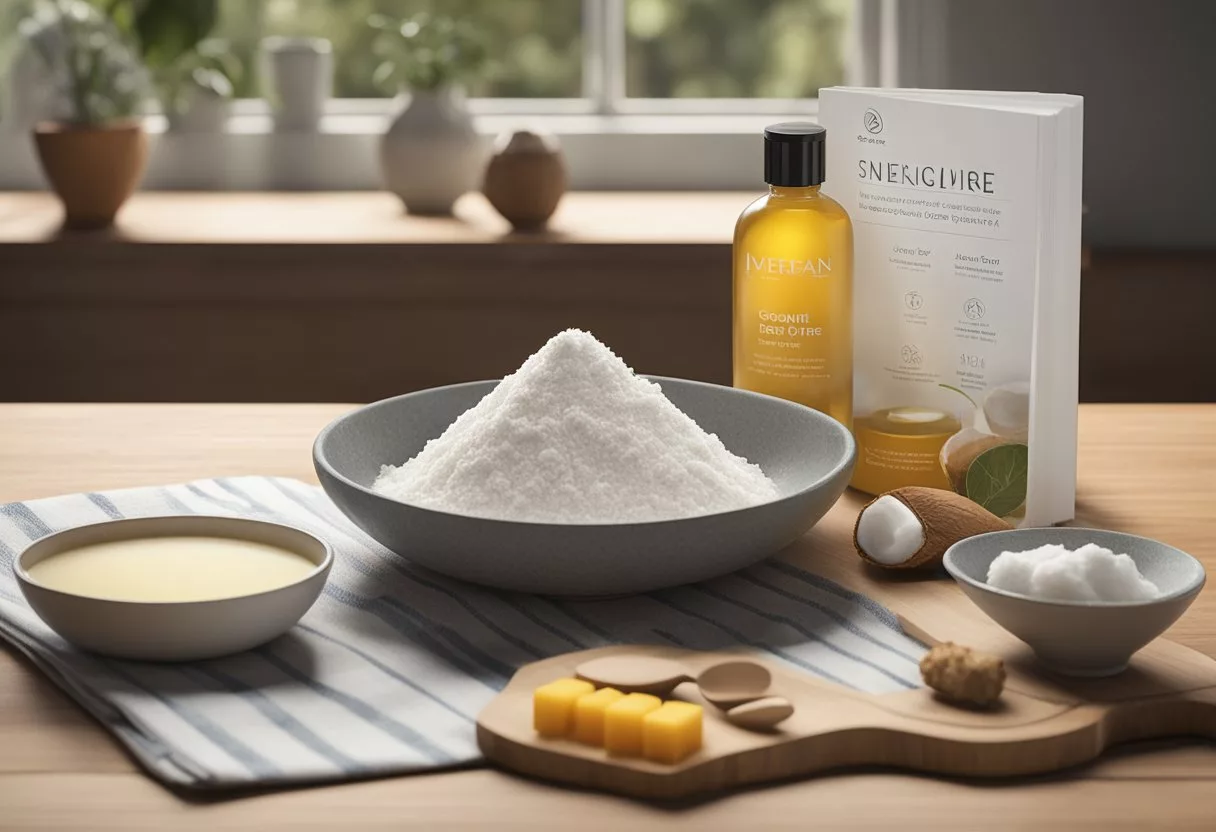
Measuring Ingredients
Before starting the DIY sunscreen process, one should gather all required ingredients and accurately measure them.
Using standard kitchen scales for items like oils and shea butter ensures consistency. Ingredients like non-nano zinc oxide must be measured with care to maintain the correct ratios for desired SPF levels.
Using a Double Boiler
A vital step in the sunscreen-making recipe involves gently melting oils and butters without destroying their beneficial properties.
Placing a glass jar or mixing bowl over a pot of simmering water to create a double boiler system achieves a uniform heat distribution suitable for melting.
Mixing and Blending Instructions
After the initial melting process, it is important to remove the mixture from heat and allow it to slightly cool to a manageable temperature.
This step is where stirring becomes essential to achieve a smooth and homogenous mixture, which is the foundation of a successful homemade sunscreen recipe.
Adding Zinc Oxide
Incorporating non-nano zinc oxide into the cooled mixture is a delicate task that determines the effectiveness of the sunscreen.
Sprinkle the zinc oxide slowly and whisk persistently to avoid lumps, ensuring even distribution throughout the mixture for effective sun protection.
Cooling and Setting
Once blended, the mixture should be allowed to cool to room temperature.
Patience is key during this stage as the sunscreen transitions from liquid to a more set consistency. At times, additional stirring during cooling may be necessary to prevent separation.
Storage Tips
After setting, the sunscreen should be transferred into a storage container, typically a glass jar, which has been sterilized and dried thoroughly to prolong shelf life.
Ideally, sunscreen should be stored in a cool, shaded place to prevent spoilage.
Labeling and SPF Testing
Labeling your homemade sunscreen is important, not just for identifying the product but also for noting the SPF level and the date it was made.
While homemade sunscreen SPF cannot be measured with complete accuracy at home, consulting a professional or estimating based on zinc oxide percentage is recommended.
Reapplication Guidelines
Homemade sunscreen should be applied generously and reapply at least every two hours, more frequently if swimming or sweating.
It is crucial to consider that no sunscreen offers 100% protection and seeking shade during peak sunlight hours complements topical sun protection measures.
Practical Usage
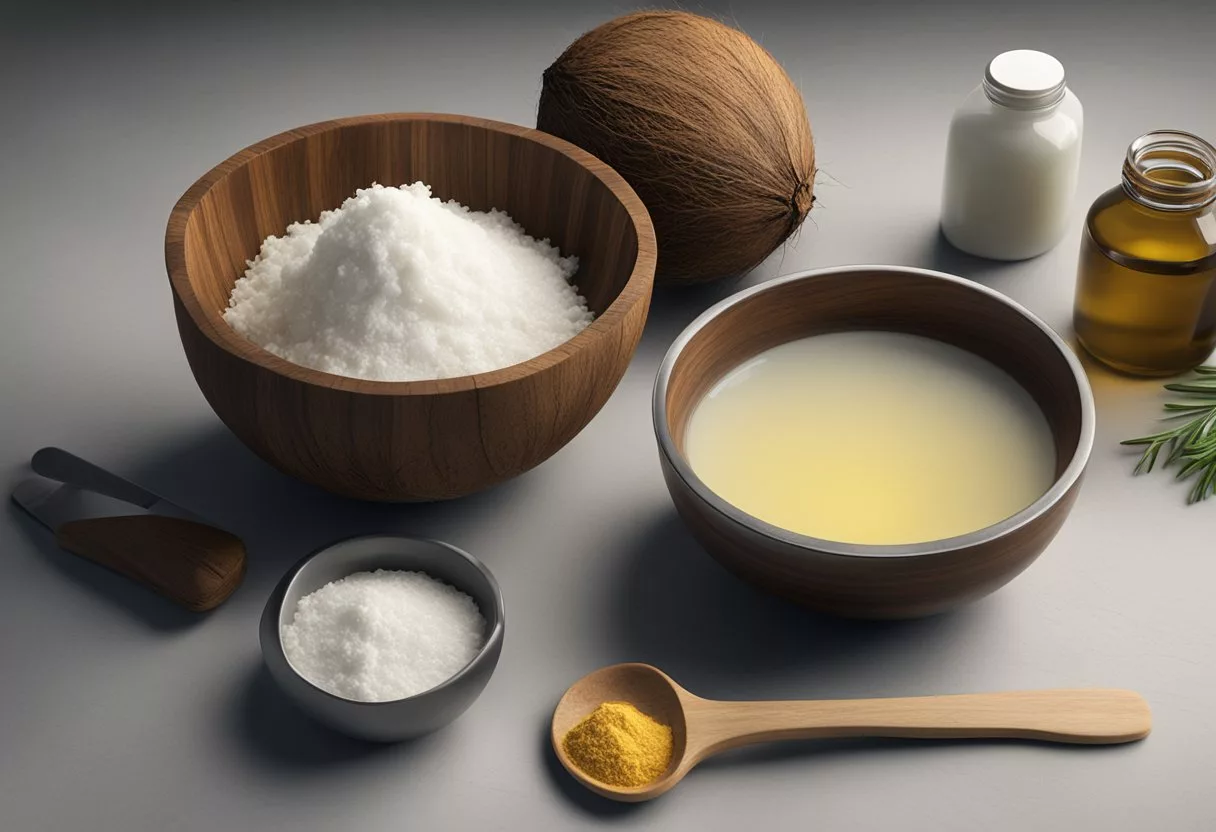
Before embarking on the use of homemade sunscreen, it’s important to understand its application technique, how to enhance water resistance, the suitability for various skin types, and appropriate usage environments.
Applying Homemade Sunscreen
Homemade sunscreen should be applied liberally and evenly over all exposed skin.
For optimal protection, individuals need to use about two milligrams of sunscreen per square centimeter of skin. This equates to approximately a shot glass full for an adult body, or a teaspoon full for the face and neck.
Reapplication should occur every two hours, or more frequently if swimming or sweating.
Waterproofing and Sweat Resistance
While providing sun protection, homemade sunscreen may need additional ingredients to enhance waterproof and sweat resistance.
Certain recipes incorporate beeswax or natural oils that can help form a barrier on the skin. However, effectiveness varies, and users should be aware that after swimming or excessive sweating, reapplication is essential to maintain adequate sun protection.
Sunscreen for Different Skin Types
For those with fair skin or sensitivity to sunlight, a homemade sunscreen formula with a higher concentration of zinc oxide may be advantageous.
Homemade sunscreen recipes can be adjusted to cater to different skin types. For example, non-comedogenic oils can be used for acne-prone skin.
Children’s skin is delicate, so a gentler formulation, often with reduced fragrance and essential oils, may be more suitable.
When and Where to Use
Homemade sunscreen should be used whenever one is exposed to the sun, whether it’s during a quick errand run or a long day at the beach.
Ensure direct sun exposure is limited, especially during summer months between 10 a.m. and 4 p.m., when UV rays are most intense.
Since homemade sunscreens may not always offer broad-spectrum protection, wearing protective clothing and seeking shade can be beneficial complementary safety measures.
Comparison to Commercial Sunscreens
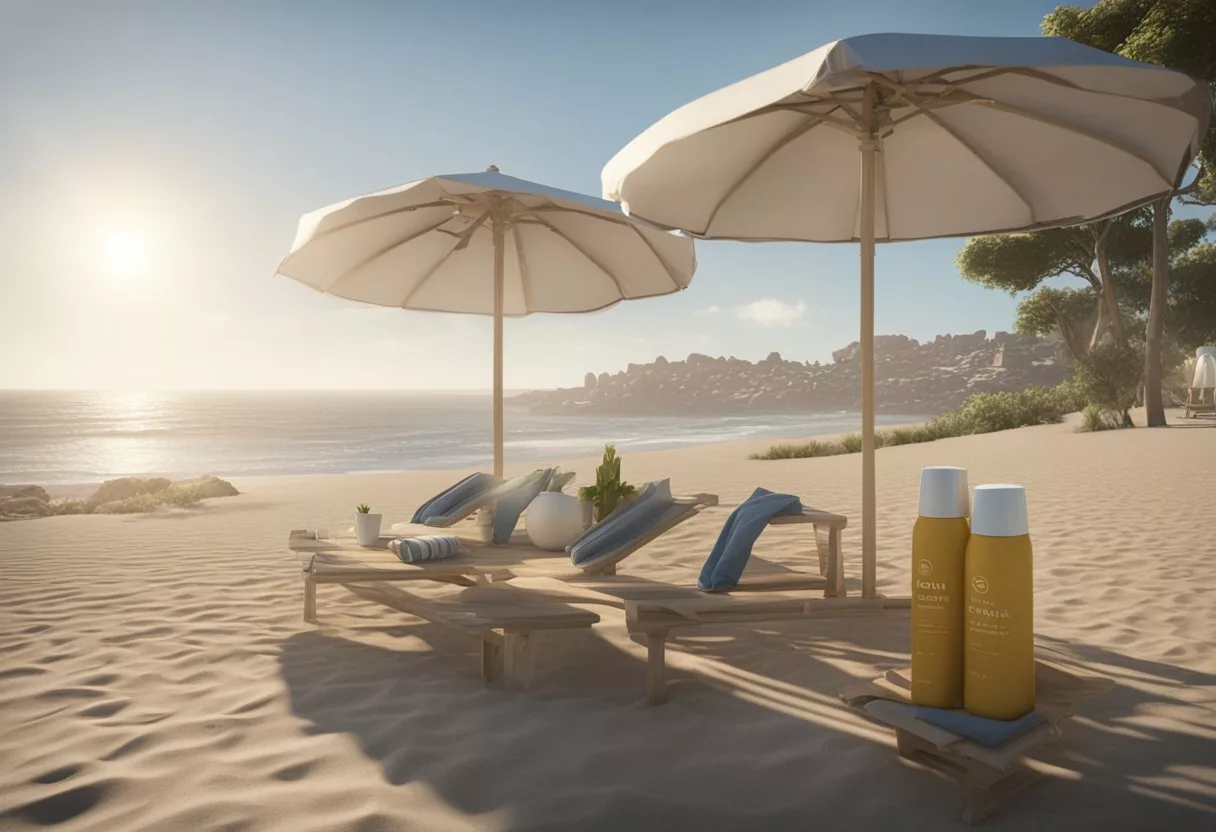
When comparing homemade sunscreens to commercial sunscreens, it’s essential to evaluate their effectiveness, potential health concerns, and environmental impact.
Effectiveness and Limitations
Homemade Sunscreens often use natural ingredients like zinc oxide or titanium dioxide for UV protection. These minerals are recognized for providing a physical barrier against the sun’s rays.
However, their protection levels can be uncertain without laboratory testing. DIY formulations might not offer Broad Spectrum protection against both UVA and UVB rays, which is a hallmark of many Commercial Sunscreens.
On the other hand, Commercial Sunscreens are extensively tested and regulated to ensure they meet specific safety and efficacy standards. They often contain a combination of physical and chemical filters designed to offer broad-spectrum protection.
Health and Environmental Concerns
Chemicals in conventional sunscreens have been scrutinized by organizations like the Environmental Working Group (EWG). Some ingredients have been linked to health issues or Cancer Risk.
Of particular concern are oxybenzone and octinoxate, which have been termed as Toxic Ingredients due to their potential hormone-disrupting effects and the risks they pose to aquatic ecosystems.
Furthermore, the use of Nanoparticle forms of zinc oxide and titanium dioxide in some sunscreens has raised health concerns. Despite their advantage of reduced whiteness on the skin, the potential for nanoparticles to penetrate the skin and cause cellular damage is a topic of ongoing research.
Homemade sunscreen users prefer them often due to perceived lower Toxic risks and minimal environmental impact. However, without sufficient scientific evidence, the safety and effectiveness of these homemade alternatives cannot be guaranteed.
It is essential to weigh the individual ingredients and their implications for both health and the environment.
Common Misconceptions

Exploring the topic of homemade sunscreen involves dismantling certain myths and understanding the distinctions between product types and terminologies. This section addresses prevalent misunderstandings that can impact sunscreen efficacy and safety.
Natural Sunscreen vs. Sunblock
The terms sunscreen and sunblock are often used interchangeably, but they refer to different methods of skin protection.
Natural sunscreens typically refer to products that use minerals like zinc oxide or titanium dioxide to create a barrier that reflects UV radiation.
In contrast, sunblock usually contains chemical filters that absorb UV radiation before it can damage the skin.
Homemade sunscreen recipes often incorporate these minerals, assuming that they provide full spectrum protection equivalent to commercially available options, which may not always be the case without proper formulation.
Myths About Homemade Sunscreen
A significant myth surrounding homemade sunscreen is that it’s as effective as store-bought products. However, without proper tools and testing, replicating the exact Science_ SPF levels promised in recipes is challenging and unreliable.
For example, an SPF rating such as 20 SPF should not be assumed without laboratory verification.
Additionally, homemade recipes often do not account for water resistance, an important factor during activities like swimming.
Another common myth is the belief that adding certain essential oils or extracts can significantly increase SPF protection. However, these ingredients often do not significantly boost the sunscreen’s overall protective capability.
Interpreting SPF Ratings
Understanding SPF (Sun Protection Factor) ratings is crucial when creating any sunscreen.
The SPF rating, such as 20 SPF, indicates the theoretical amount of time you can be in the sun without getting burned compared to unprotected skin.
A common misconception is that SPF relates to the percentage of UVB rays blocked, but in fact, SPF 20 does not mean 20% protection. Rather, it means that one can stay in the sun 20 times longer than without protection.
This interpretation is often oversimplified, leading to misconceptions about the level of protection offered.
Homemade sunscreen users must recognize that without proper lab testing, the actual protection level may vary significantly from the expected SPF rating.
Frequently Asked Questions
This section addresses common inquiries people have when making homemade sunscreen, offering detailed guidance on ingredients, formulation, and effectiveness.
What are the key ingredients needed to make an effective homemade sunscreen?
An effective homemade sunscreen typically includes zinc oxide as a physical barrier to block UV rays, along with carriers like coconut oil, shea butter, and beeswax to help apply the protective layer onto the skin.
How can one create a homemade sunscreen suitable for oily skin types?
For oily skin, a homemade sunscreen can be created using non-comedogenic oils such as jojoba or sunflower oil. Shea butter can also be included as it’s less likely to clog pores while providing moisture.
What steps are involved in creating a homemade sunscreen with SPF 30 protection?
Creating a homemade sunscreen with approximately SPF 30 protection involves carefully blending ingredients like coconut oil, shea butter, and a higher concentration of zinc oxide. Measurements must be precise to achieve the desired level of protection.
How is SPF calculated for homemade sunscreen formulations?
Calculating SPF for homemade sunscreens is complex and typically requires laboratory testing. However, the approximation involves the percentage of zinc oxide used in the mixture, which determines the protection level against UVB rays.
Can homemade sunscreen be made to be water-resistant, and if so, how?
Homemade sunscreen can be made more water-resistant by adding natural waxes like beeswax that help the sunscreen to stay on the skin in water. However, ensure to reapply regularly after sweating or swimming, as homemade formulations may not be as water-resistant as commercial ones.
What are some natural alternatives to traditional sunscreen ingredients?
Natural alternatives to traditional sunscreen ingredients include oils with natural SPF properties. For example, carrot seed oil and red raspberry seed oil contain compounds that offer some protection against UV rays.